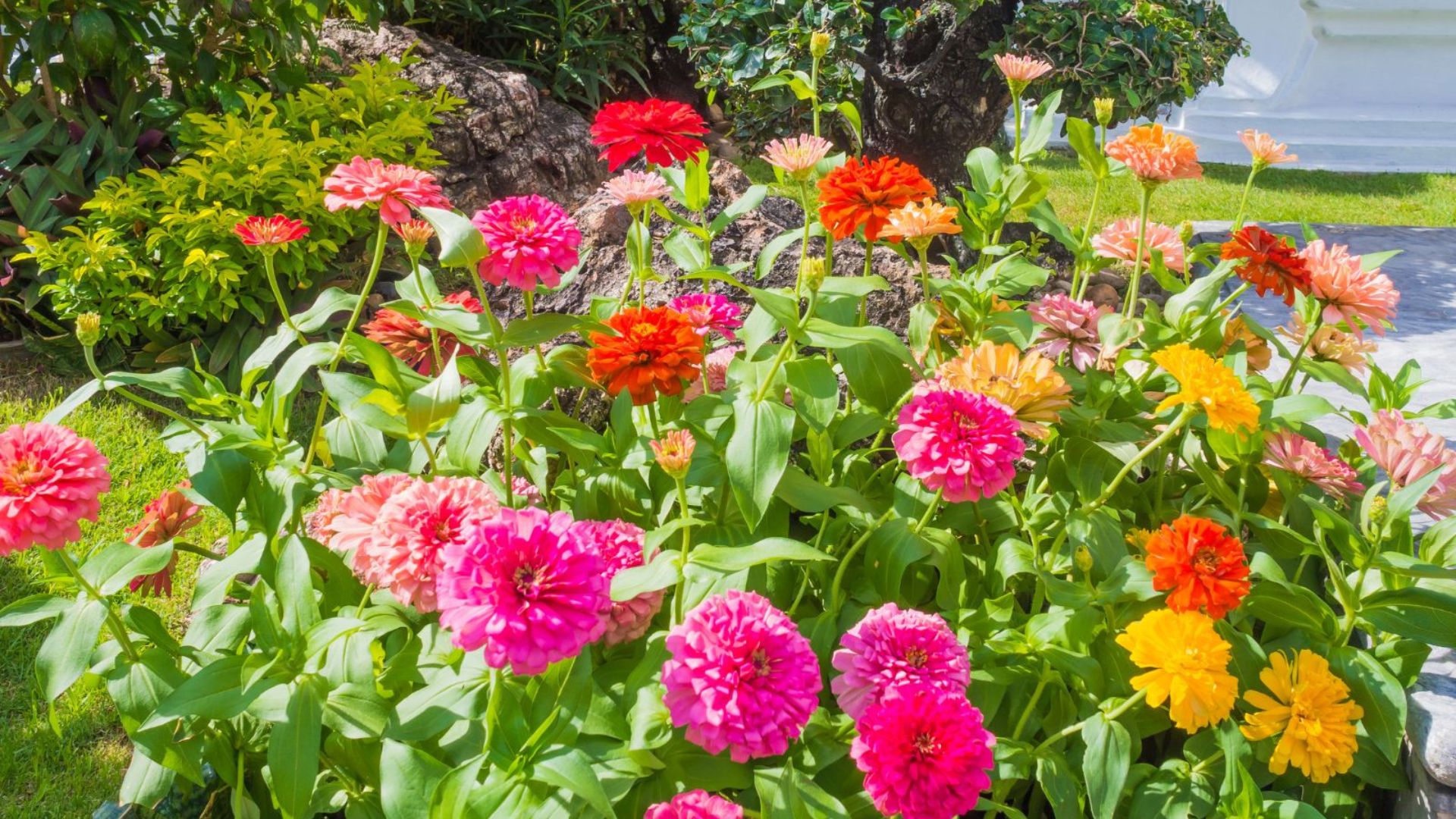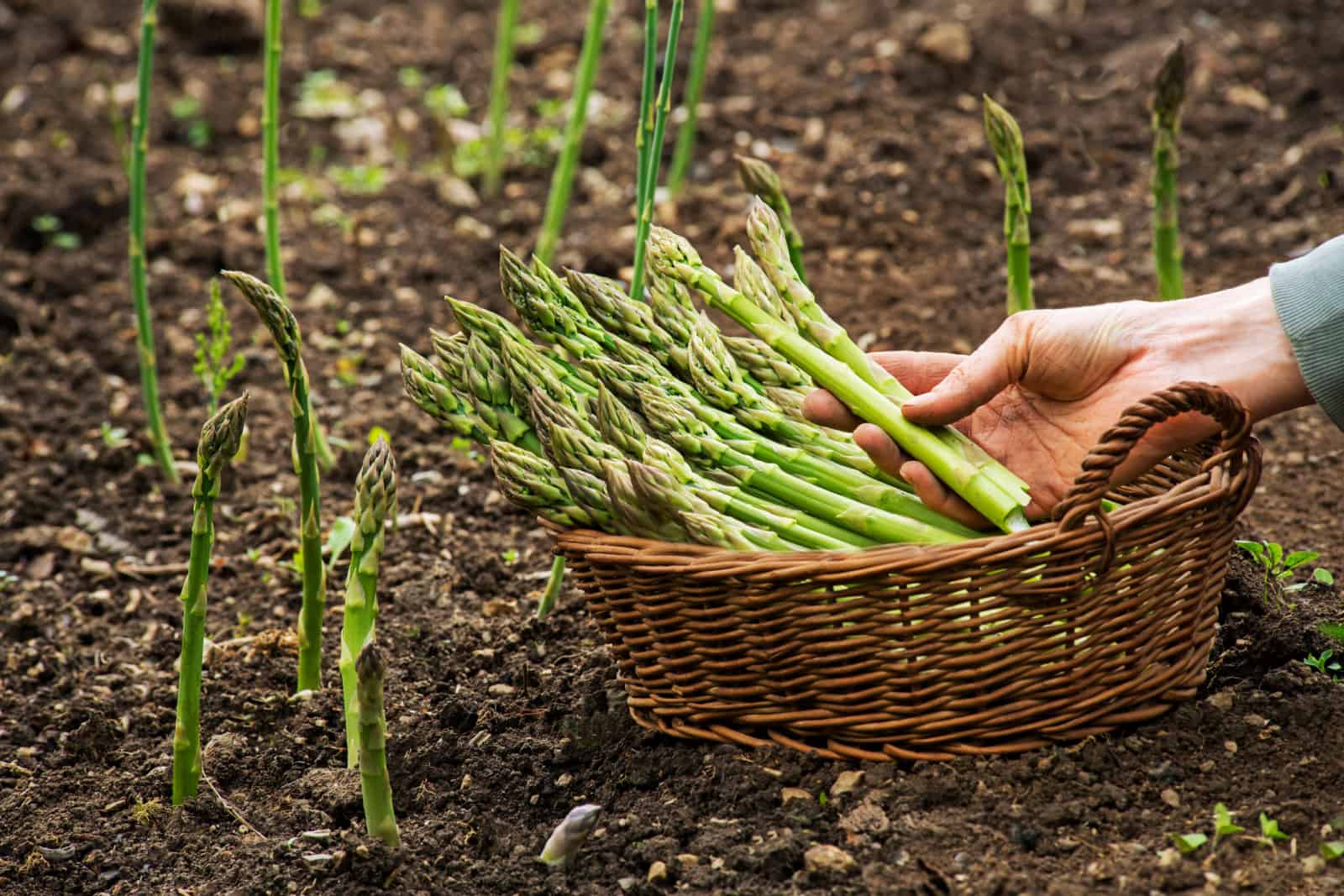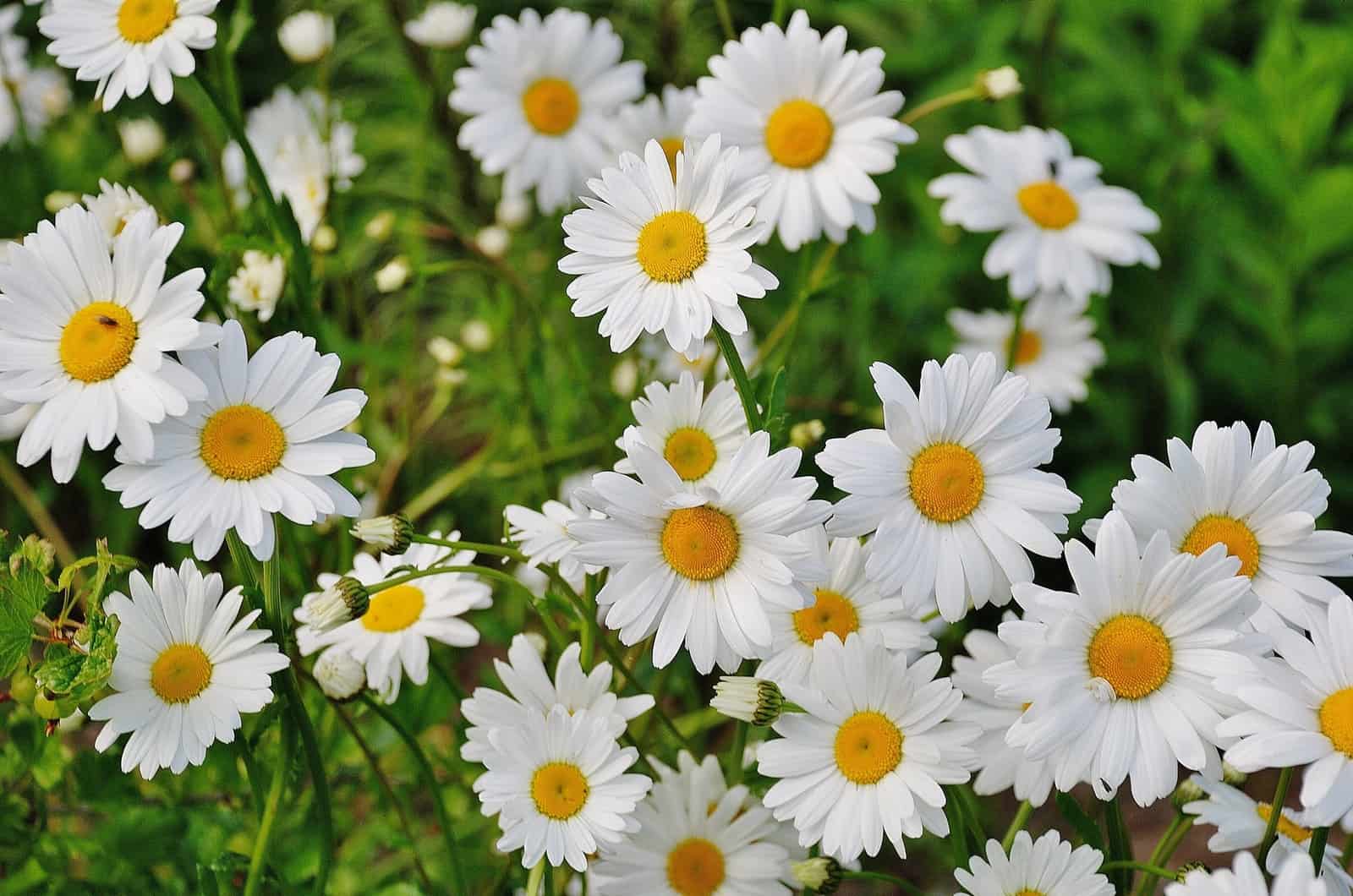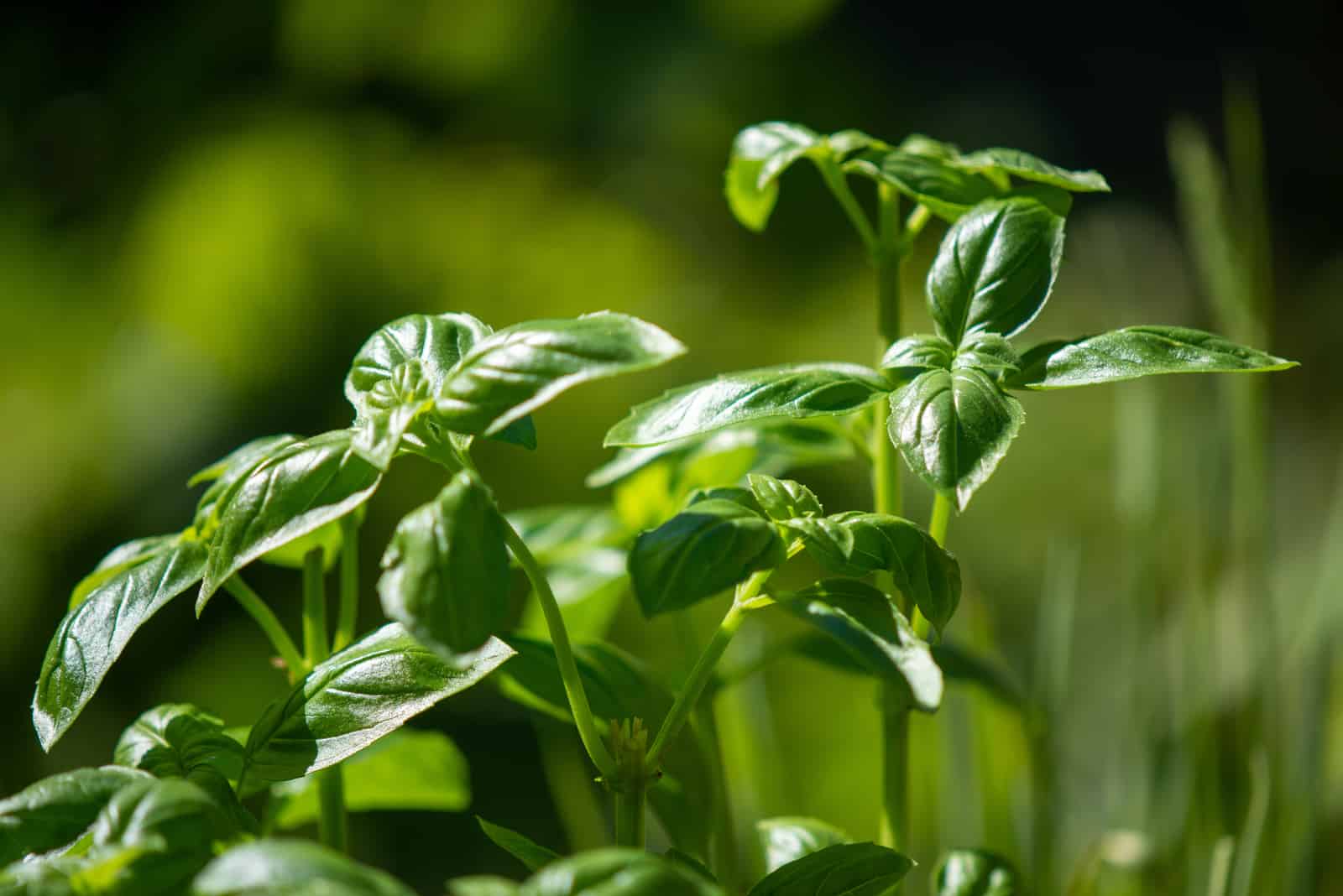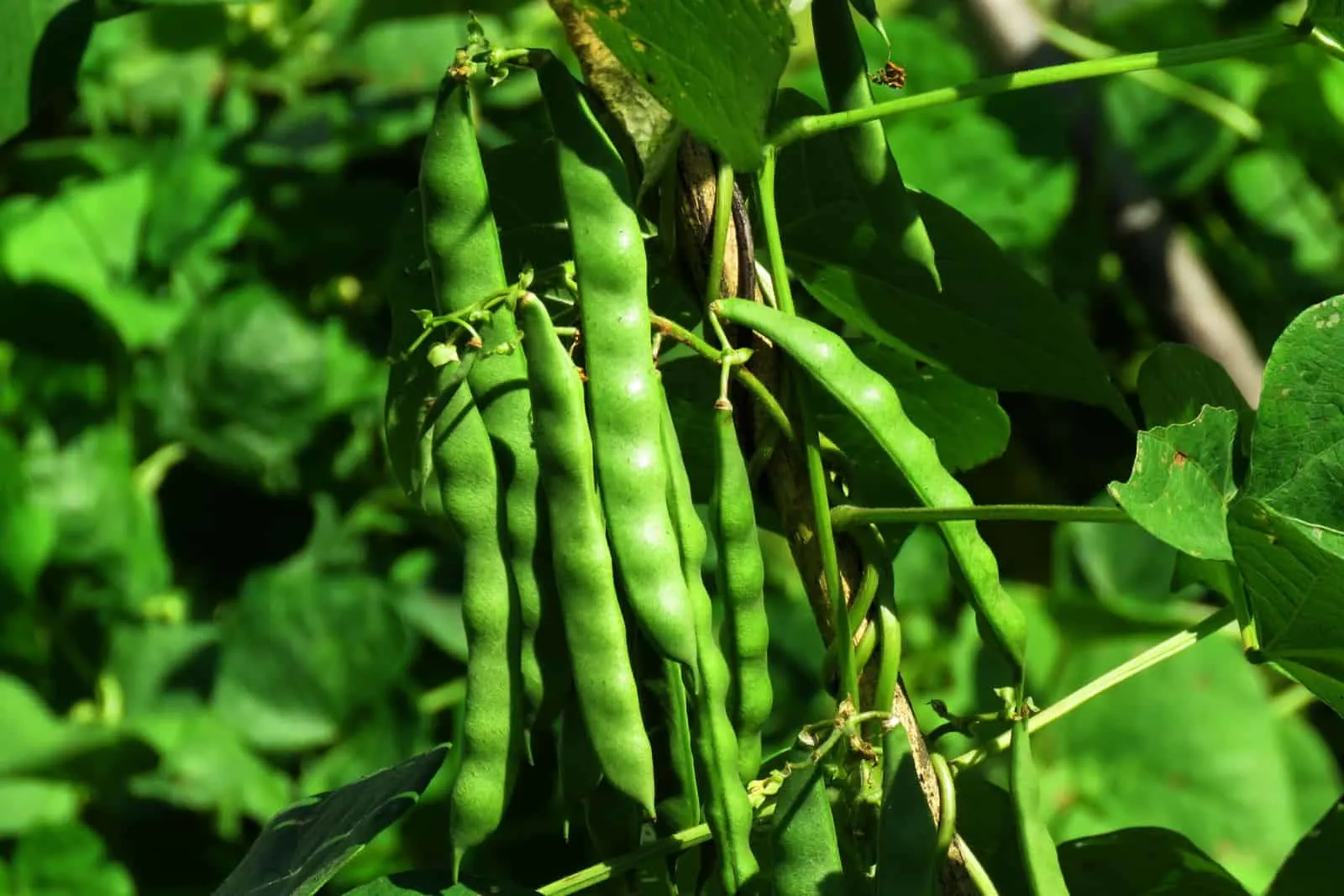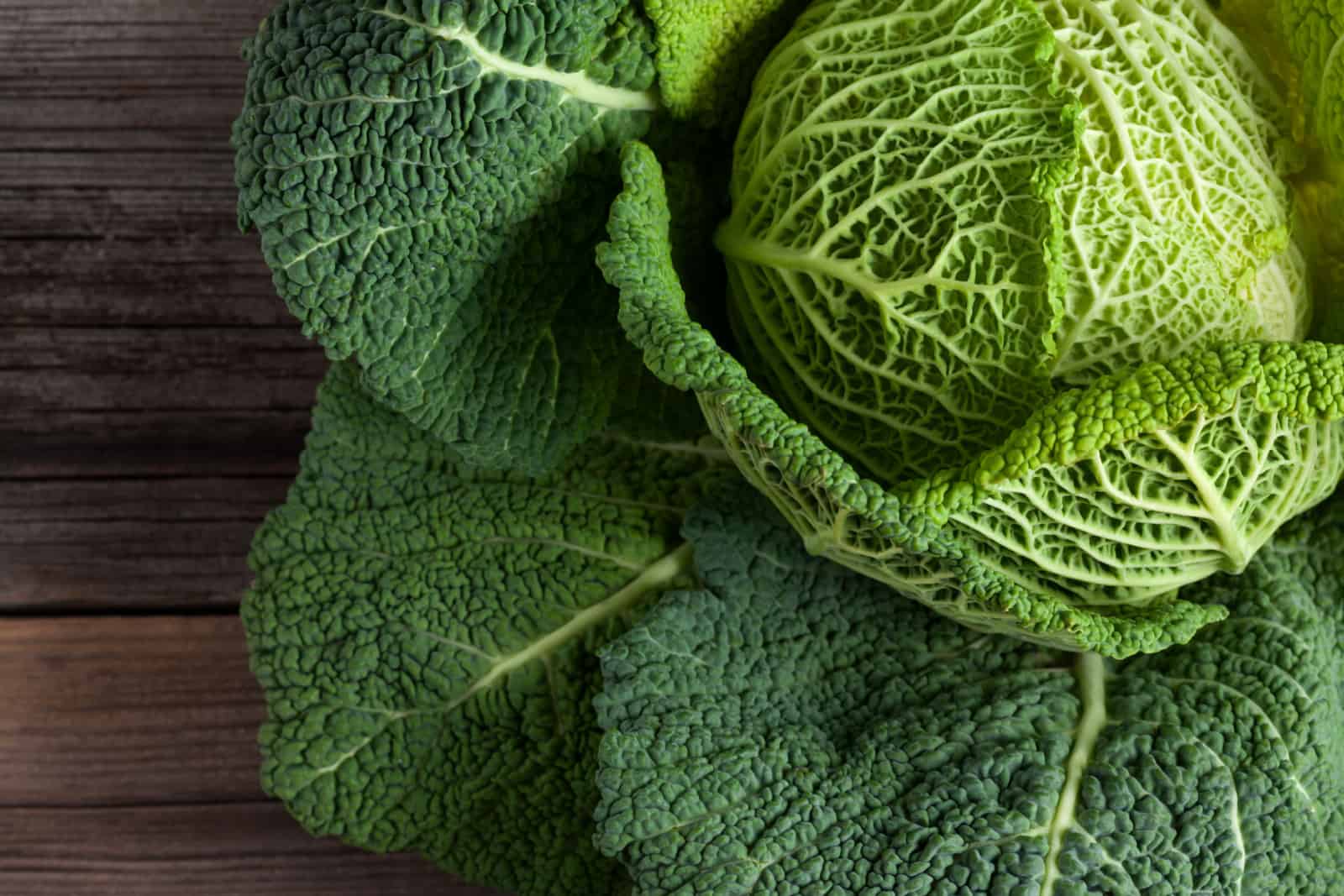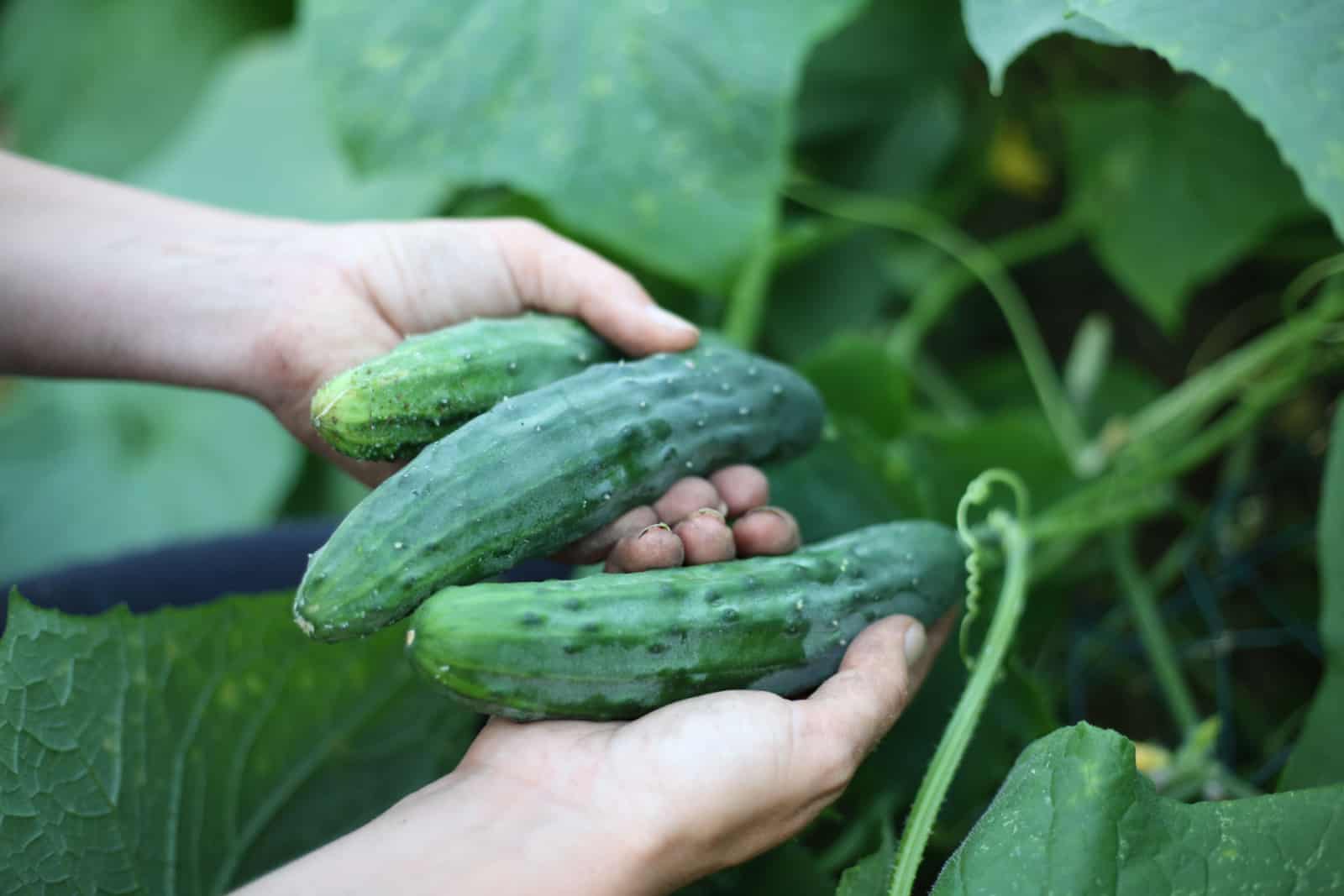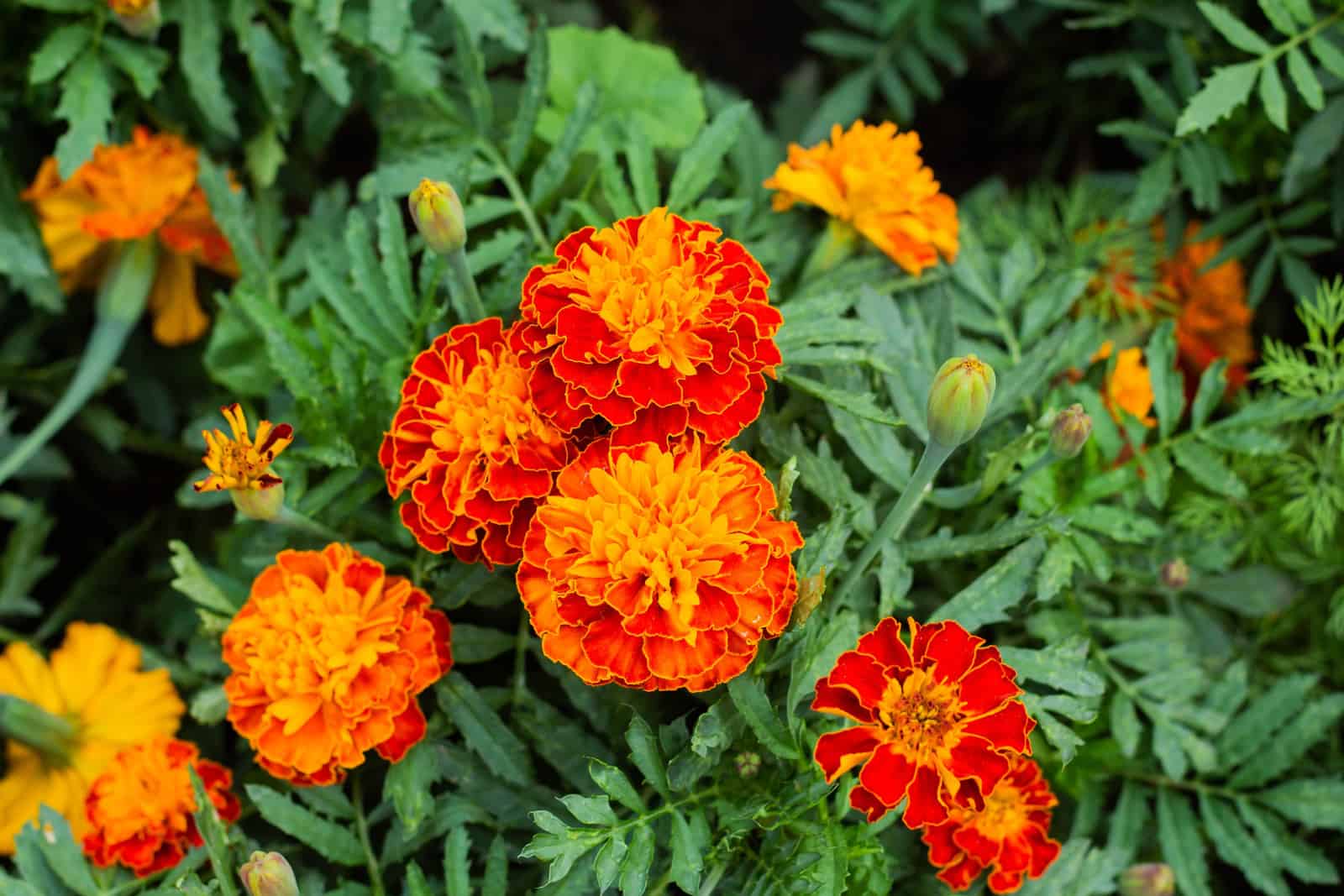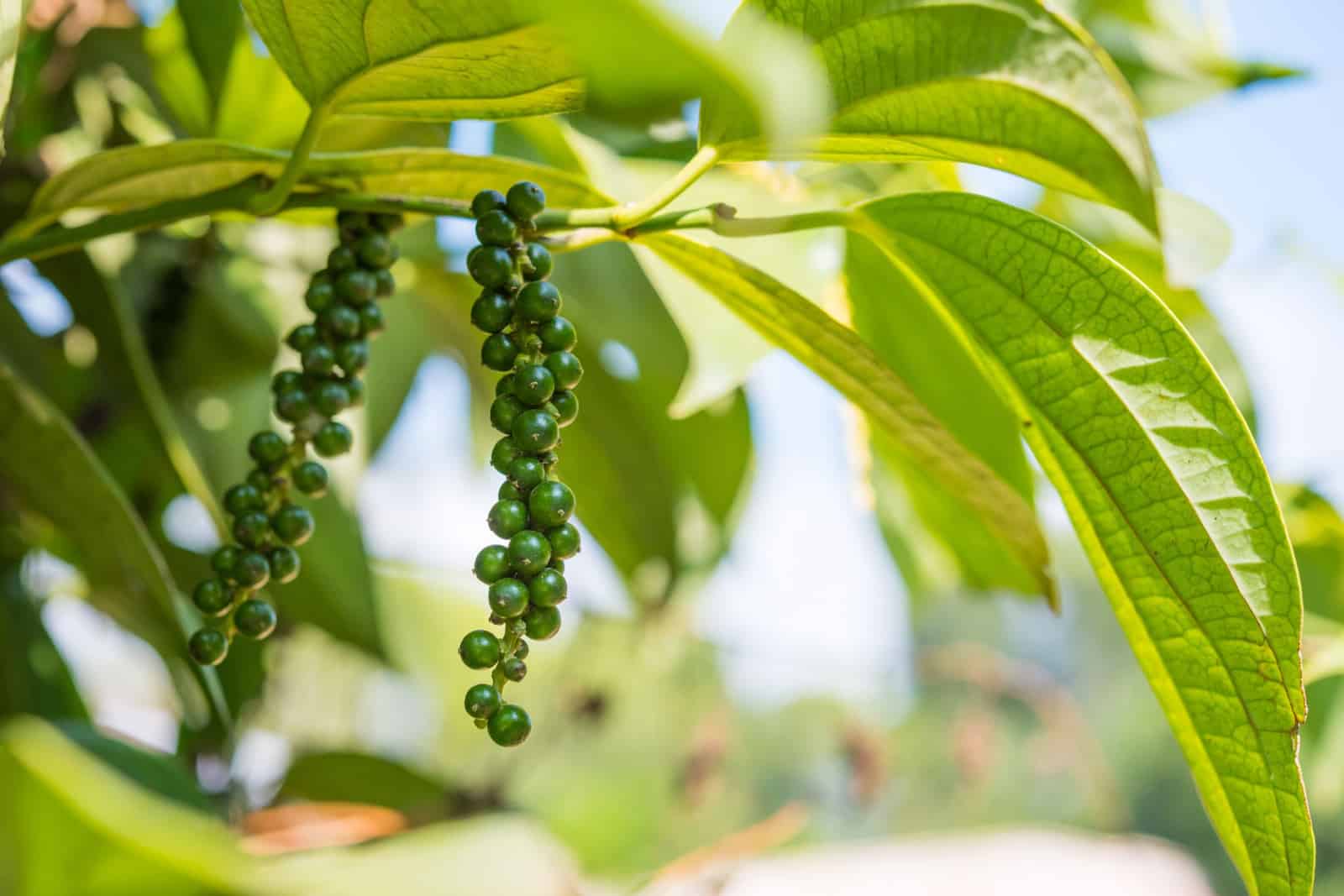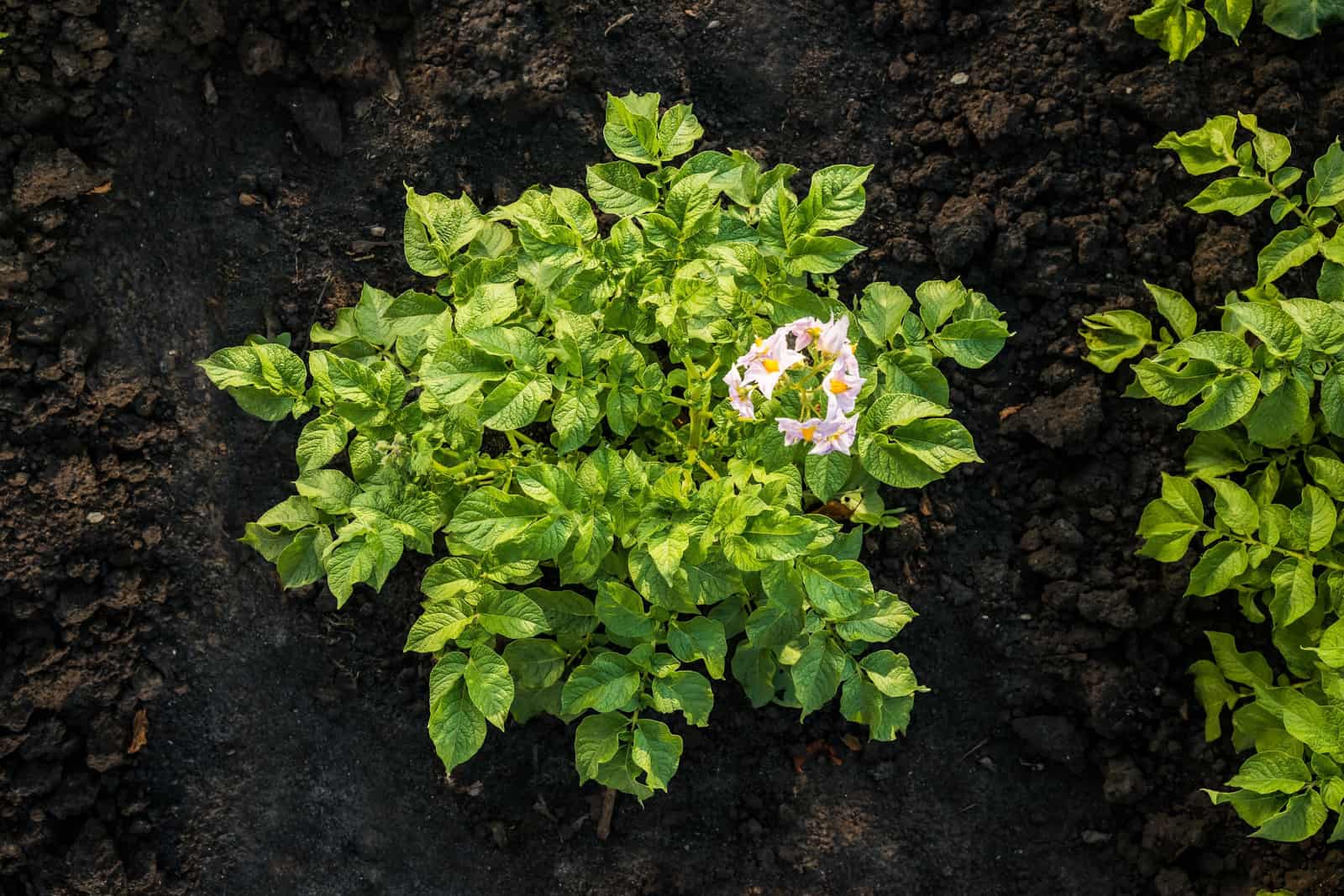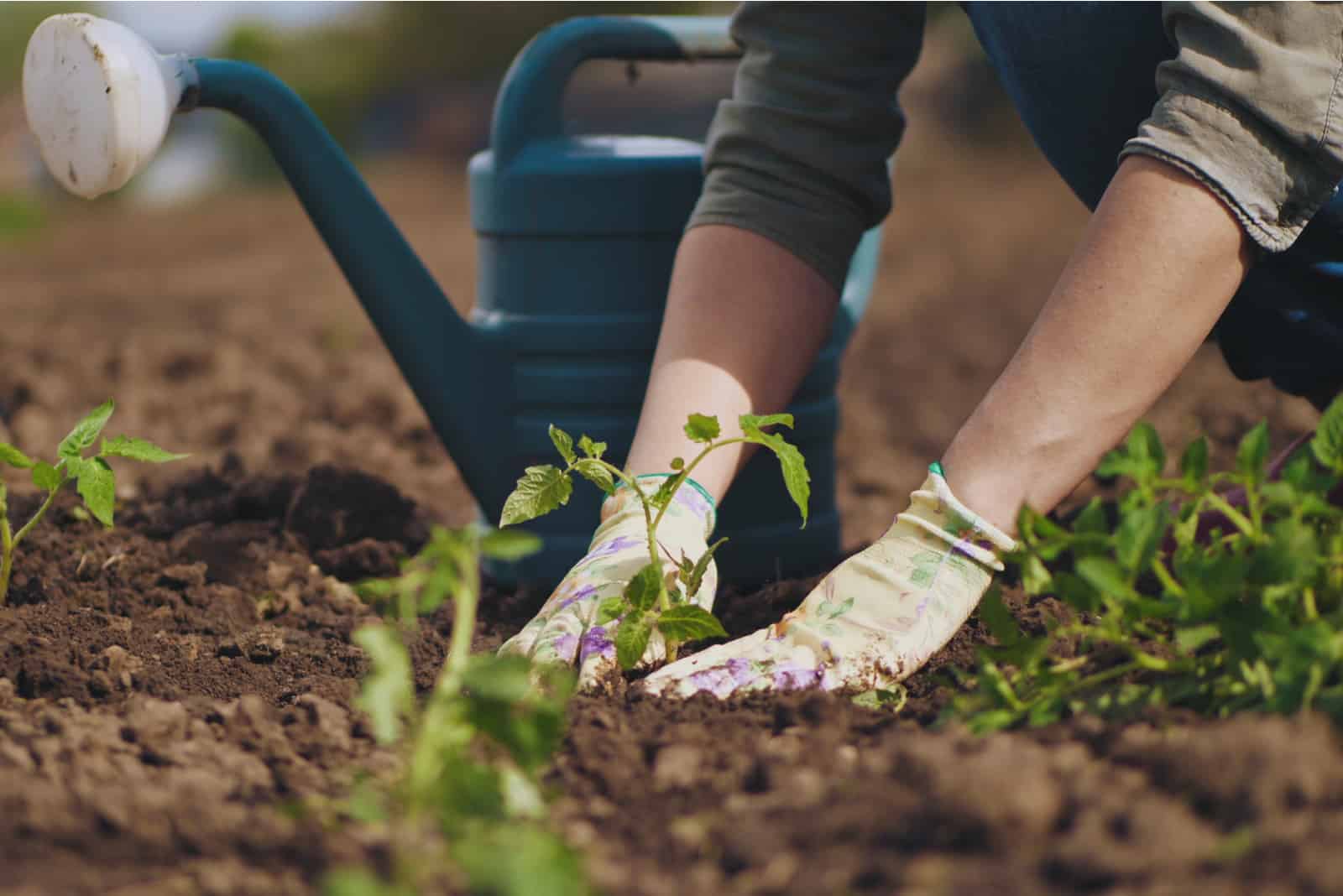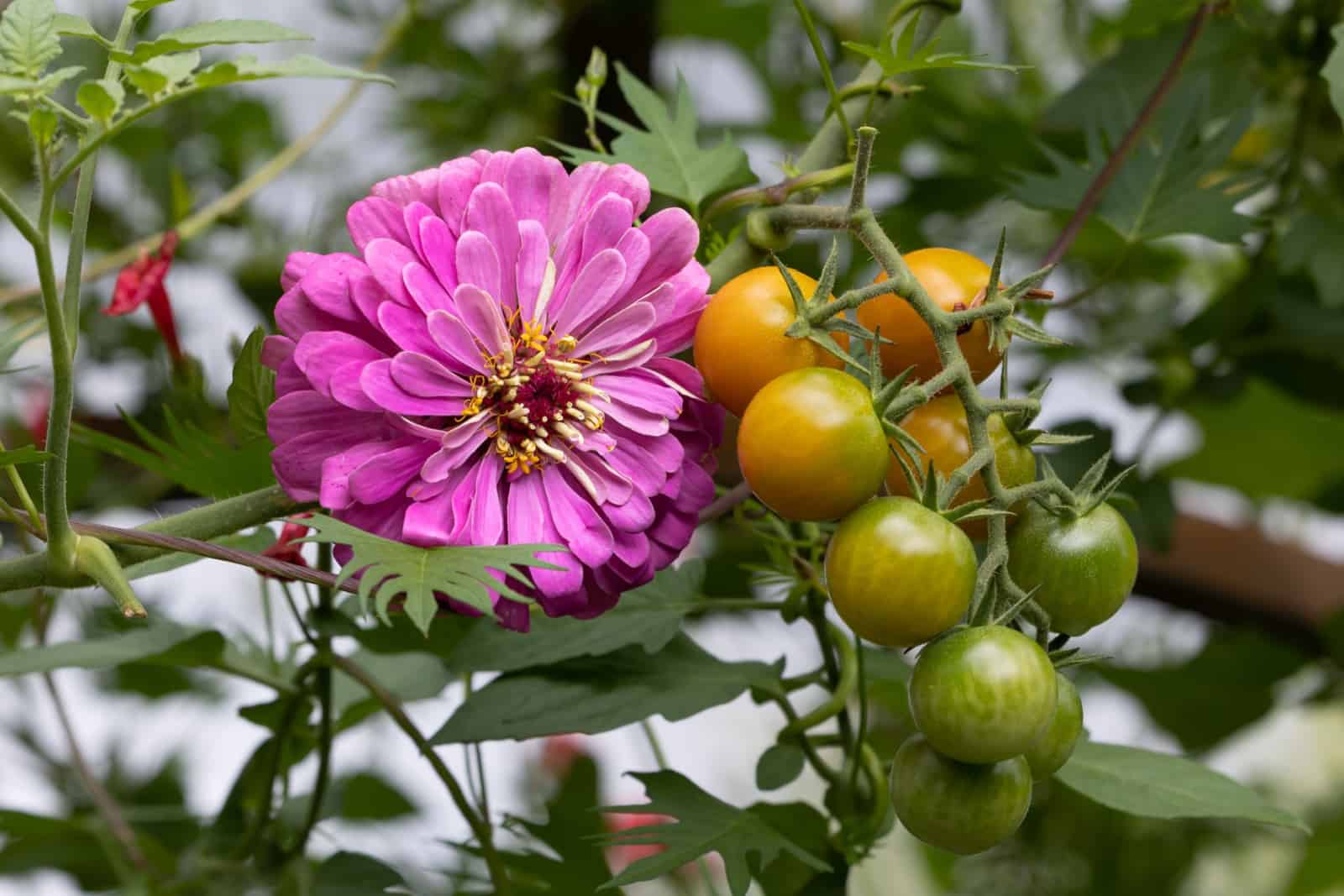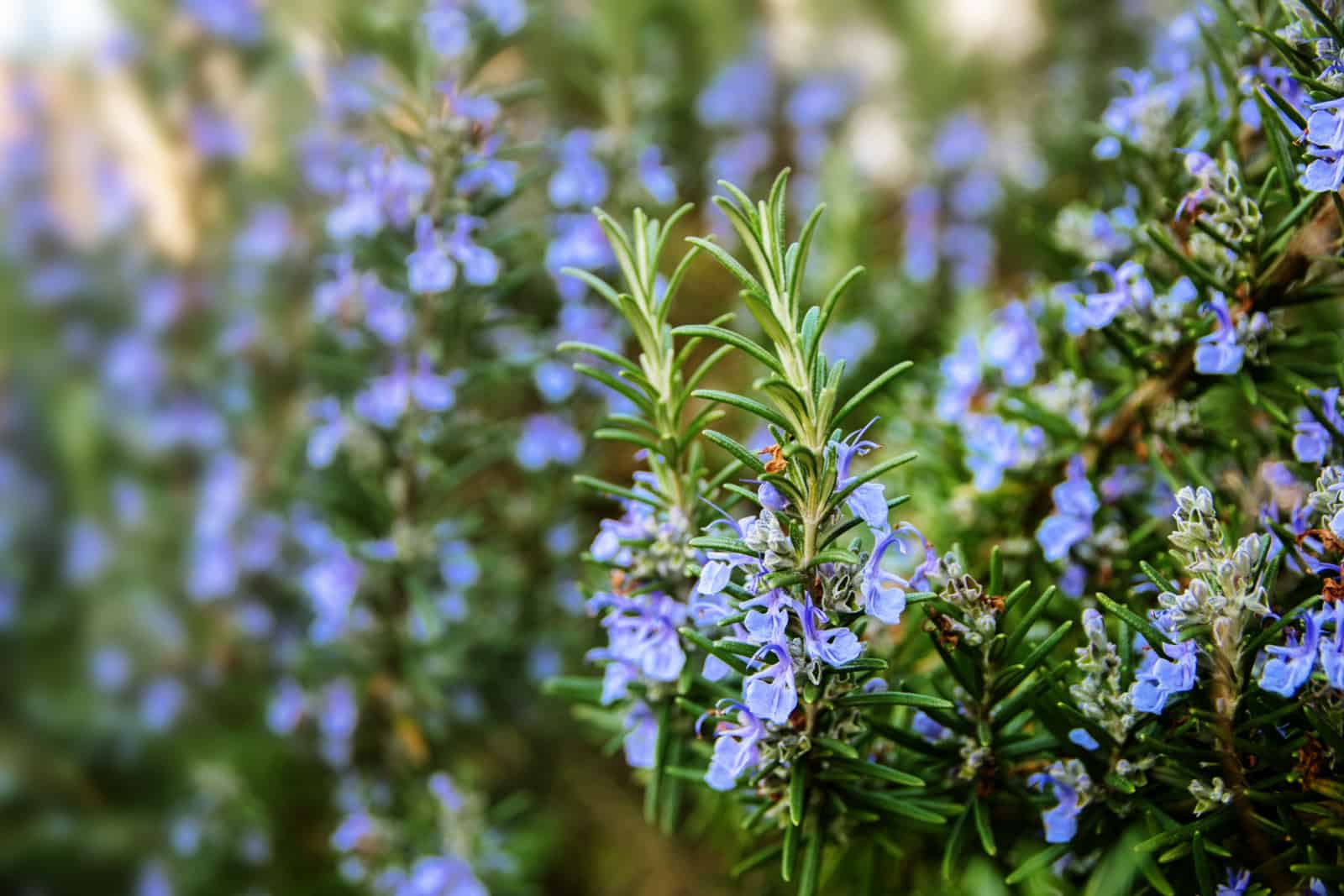There are so many benefits of companion planting, from attracting beneficial insects and acting as trap crops to adding a splash of color to your vegetable garden.
There are many combinations out there, but today we’ll focus on zinnia companion plants, such as basil, dahlias, marigolds, peppers, tomatoes, plants from the cabbage and cucurbit families, and more.
And while I consider zinnias one of the most beautiful flowers, I simply have to mention their benefits. For example, they can attract pollinators and predatory insects that feed on aphids, caterpillars, worms, etc.
Of course, not all plants are suitable companions for zinnias, which is why you should avoid growing them near herbs that prefer drier soils.
Let’s learn about all the wonderful zinnia companion plants!
The Best Zinnia Companion Plants
Zinnias are a great growing buddy for various plants, including veggies, flowers, and herbs.
Therefore, you can grow them in your flower beds with other plants from the aster family or dahlias. You can also add them to your vegetable garden and have them keep your tomatoes, peppers, cucumbers, melons, etc. company.
Now let’s find out what makes zinnias such a great companion!
Asparagus
Asparagus is a delicious vegetable that doesn’t get many pests, but it can fall victim to aphids, beetles, caterpillars, etc. (1)
Luckily there’s no need for chemical control in most cases of infestation since these bugs have many natural predators, such as wasps.
And the great news is that zinnias attract parasitic wasps that feed on asparagus pests and can reduce the need for chemical control.
Moreover, zinnias will attract many pollinators to any garden since they’re rich in pollen, and this may be beneficial for asparagus plants as well.
Once the asparagus produces flowers, the pollinators can do their job and the plant will produce seeds that you can use to plant more of this delicious veg.
And if you want more of the benefits of companion planting, you can simply grow more companion plants for asparagus, such as dill, basil, tomatoes, marigolds, etc.
Aster Family
Zinnias belong to the aster family, so it’s only logical that they grow well with other members because they have similar needs.
I love growing them with black-eyed-susans, sunflowers, daisies, and dahlias since they all look similar and add a vintage and relaxing look to my garden – something I enjoy very much.
All these plants have similar light, watering, and soil needs, so you won’t have to worry about whether you’ll accidentally hurt one companion.
Additionally, all of these plants have beautiful blossoms and will add a lot of character to your yard. They also attract beneficial insects that can serve as pest control or pollinate your veggies.
Basil
Basil is one of the perfect companions because it is so fragrant that its mere scent repels certain bugs from your yard.
It can also produce lavender-like blossoms that draw the attention of many beneficial insects, from hoverflies and parasitic wasps to bees and butterflies. Some will keep your crops safe from pests while others ensure proper pollination.
Of course, all these flying insects will pollinate basil and plants that grow near it, which is why it is so helpful to have it in your garden.
What’s more, you can enhance the effectiveness of basil by planting zinnias near it because they’ll invite more beneficial bugs.
Another thing that made me try growing basil and zinnias together is the fact that they have the same requirements of full sun and a moist growing medium.
This made it quite easy to care for them, and I didn’t feel like I had any extra work to do, which is a great thing when you have a lot of veggies to tend to.
Finally, basil companion plants include peppers and asparagus plants, the same veggies that are great companions to zinnias.
Beans
Beans and zinnias are good companion plants because beans help with nitrogen fixation. And since zinnias require 10-15 g pot-1 of nitrogen for optimal growth, health, and the production of high-quality blossoms, this feels like a perfect combo. (2)
On the other hand, it has also been said that beans generally don’t fix enough nitrogen to make a difference. However, this statement was repudiated since there are breed lines that can derive enough nitrogen from the atmosphere to sustain the crops. (3)
Therefore, all you have to do is choose the suitable bean cultivar and your zinnias (or other veggies) will thrive near them.
Furthermore, zinnias will attract bees, butterflies, and other hovering insects that can pollinate the bean flowers and help them produce seeds. These are necessary for their reproduction, although the plant is self-pollinating most of the time.
Finally, zinnias are also great as a sacrificial crop since they’ll attract Japanese beetles and similar pests that attack beans. These bugs will instead munch on your zinnias instead of the beans, so you’ll have a large harvest to look forward to.
Cabbage Family
The cabbage family includes plants such as cabbage (of course), broccoli, cauliflower, kale, and similar veggies.
All these vegetables can grow quite well with zinnias because the latter attracts predatory insects such as wasps and hoverflies, which deal with harlequin bugs, whiteflies, etc.
These pests can be quite harmful (and even deadly) for younger plants, although they can wreak havoc on older vegetables from the Brassica family as well.
I tried growing cabbage next to my zinnias (along with my potatoes), and I must say that I was really surprised with how few bugs there were on my plants afterward.
Of course, there were some pests, but not enough to call it a real infestation – and they were easy to get rid of!
Cucurbits
Cucurbits include cucumbers, melons, squash, and similar plants, and they are one of the best companion plants for zinnias.
These plants have virtually the same requirements and thrive in moist, well-draining substrates and plenty of direct sunlight.
But aside from the growing conditions, there is one more thing that makes them suitable companions; zinnia blossoms attract ladybugs, which feed on aphids.
They’ll also attract enough pollinators for the entire garden, so you won’t have to look for signs of pollination on cucumbers or worry whether you’ll have enough fruit to enjoy your summer salad.
What I like to do when growing zinnias and cucurbits together is train the melons, squash, and cucumbers on a trellis. This way they won’t overtake the entire space and smother the zinnias.
Marigolds
Marigolds are an ultimate companion that go well with almost every plant in your garden, including zinnias.
And even though they also belong to the same family as zinnias, we had to mention them separately since they have amazing benefits for their companions.
Together, zinnias and marigolds will attract various predatory insects such as ladybugs, hoverflies, parasitic wasps, predatory beetles, etc.
You can use them as a trap crop so that aphids and whiteflies attack them instead of your veggies, or you can add them to your pollinator garden since their flowers are hard to resist.
Not to mention that marigolds can even fight root-knot nematodes due to a compound (α-terthienyl) they exude! (4)
Therefore, you can plant both marigolds and zinnias in your tomato garden to increase their benefits and keep your veggies safe.
Peppers
Another great companion plant for zinnias are peppers, or rather zinnias are excellent companions for peppers.
Zinnia blossoms attract various pollinators, and you’ll end up with a much larger pepper yield due to high pollination.
Furthermore, zinnias will also attract hoverflies and parasitic wasps, which will feed on aphids and similar tiny pests.
However, you have to be careful which zinnia and pepper plant varieties you want to grow together. Some zinnia species can get rather tall and create a shadow that peppers don’t enjoy.
In fact, these plants are excellent companions because they both need full sun to thrive. However, if zinnias restrict sunlight from shining on your peppers, your yield will reduce.
Potatoes
Zinnias attract hoverflies, ladybugs, and parasitoid wasps, which successfully deal with pest infestations. Therefore, they can keep your potato plants safe from aphids, flea beetles, potato leafhoppers, etc.
I tried growing potatoes and zinnias last year, and I must say that my potato plants thrived.
I also didn’t have to use much pesticide to deal with common potato pests, which was a great plus. And we all know how quickly potatoes can get infested!
Therefore, companion planting these two together will ensure you have enough potato tubers to enjoy come harvest time.
Tomatoes
Whether you have one of the sweetest tomato cultivars or the classic cherry tomato, you’ll still need to provide them with excellent conditions for a large yield.
And what better way to do so than by planting zinnias, which can attract beneficial insects such as pollinators, predatory wasps, hoverflies, etc. to your garden?
These bugs will pollinate the flowers and ensure a large yield while keeping your plants safe from tomato hornworms, one of the most vicious pests that attack tomatoes.
You can also combine these two plants with some other fragrant herbs such as basil, borage, dill, etc. since they can also enhance the taste of tomato fruit.
Editors Choice: Tomatoes & Zinnias
Growing tomatoes and zinnias together in a vegetable garden is my personal favorite combination for a number of reasons.
But I’d be lying if I said that this combo wasn’t inspired by aesthetics. I love tomato plants and I think they look quite nice once their fruit starts changing color.
However, I know that a tomato bed isn’t the most attractive thing you’ll see in a garden, which is why I decided to add some flowers to mine and see what happened.
Of course, zinnias are the first ones that came to my mind since these plants attract pollinators and natural pest predators that ensure a high yield.
These flowers feed the need for beauty while helping tomatoes thrive at the same time.
Of course, you don’t have to only use the tomato & zinnia combination. You can grow this plant with many other veggies, and it’ll look equally astonishing next to broccoli, cauliflower, cucumbers, or tomatoes.
The Worst Zinnia Companion Plants
Even though zinnias are excellent companions for various herbs, vegetables, and flowers one may find in a garden, they’re not suitable for all of them.
Some of the worst zinnia companion plants are drought-loving herbs such as rosemary, lavender, and thyme.
These plants have different soil and water requirements, which will be the death of your zinnias. For instance, lavender thrives in drier and less fertile growing mediums, something zinnias cannot stand.
However, you can reap the benefits of all these plants and grow them in close proximity by planting them in containers.
For instance, you can place your potted lavender near your zinnias, where they’ll bask in full sun and attract pollinators to your yard.
Final Thoughts
Some of the best zinnia companion plants include flowers from the same family (sunflowers, daisies, dahlias, etc.), tomatoes, potatoes, peppers, cucurbits, plants from the cabbage family, beans, basil, etc.
One thing that makes them suitable companions is the fact that they all have similar requirements. Therefore, you can grow them in the same soil and location, and water them at the same time.
Zinnia flowers will also attract beneficial bugs that will keep its companions safe from pests and ensure enough pollinators for a high yield.
Of course, not all plants can grow well with zinnias, and some of the ones you should avoid are plants that love drier soils, such as thyme, lavender, and rosemary.
Until next time!
[sp_easyaccordion id=”19181″]

